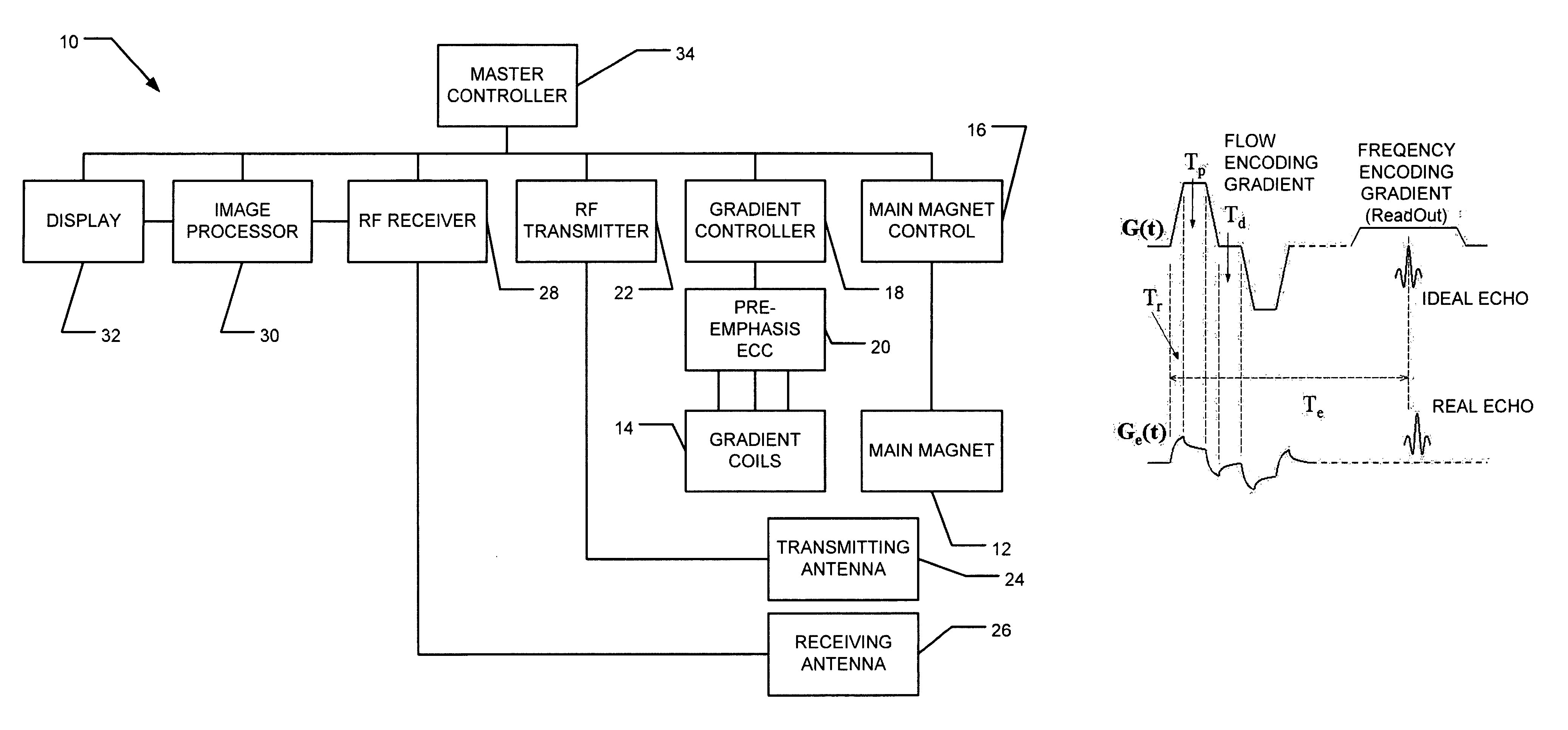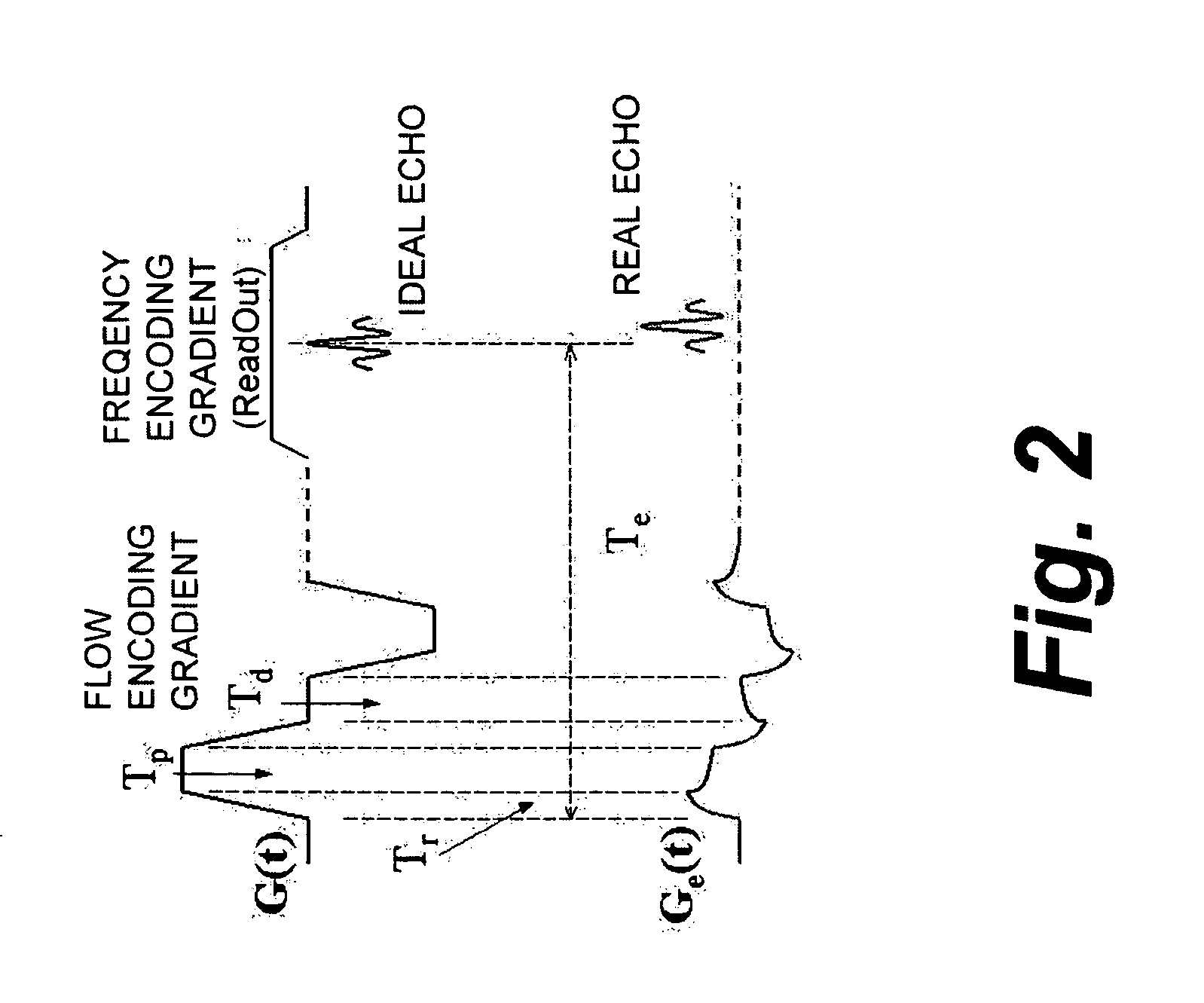Eddy current measurement and correction in magnetic resonance imaging systems
a magnetic resonance imaging and eddy current technology, applied in the field of magnetic resonance imaging systems, can solve problems such as image distortion resulting from overcompensation, image artifacts or distortion, and undercompensation still occurring
- Summary
- Abstract
- Description
- Claims
- Application Information
AI Technical Summary
Benefits of technology
Problems solved by technology
Method used
Image
Examples
Embodiment Construction
[0018] In various configurations, the present invention provides technical effects that include improved calibration of magnetic imaging systems that not only benefit clinical applications using phase contrast imaging as well as other application or sequences that are affected by eddy currents having short time constants.
[0019] In some configurations of the present invention and referring to the block diagram of FIG. 1, a magnetic resonance imaging apparatus 10 includes a main magnet 12 and a set of one or more gradient coils 14. The operation of main magnet 12 is under control of main magnet controller 16. A gradient controller 18 controls the operation of gradient coils 14. Gradient controller 18 produces current pulses to gradient coils 14, thereby producing magnetic field pulses having a preselected profile. However, as a result of eddy current fields, the profiles of the magnetic field pulses are distorted relative to the current pulses applied to gradient coils 14. The distor...
PUM
 Login to View More
Login to View More Abstract
Description
Claims
Application Information
 Login to View More
Login to View More - R&D
- Intellectual Property
- Life Sciences
- Materials
- Tech Scout
- Unparalleled Data Quality
- Higher Quality Content
- 60% Fewer Hallucinations
Browse by: Latest US Patents, China's latest patents, Technical Efficacy Thesaurus, Application Domain, Technology Topic, Popular Technical Reports.
© 2025 PatSnap. All rights reserved.Legal|Privacy policy|Modern Slavery Act Transparency Statement|Sitemap|About US| Contact US: help@patsnap.com



